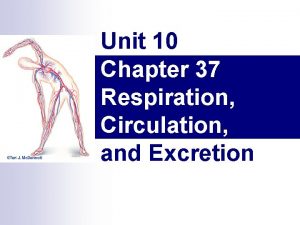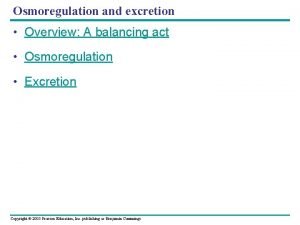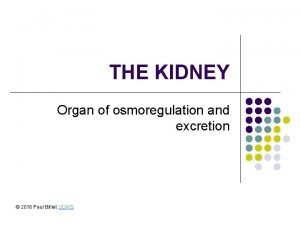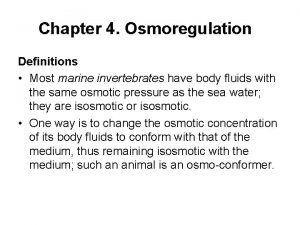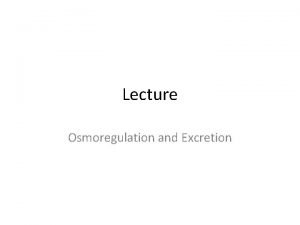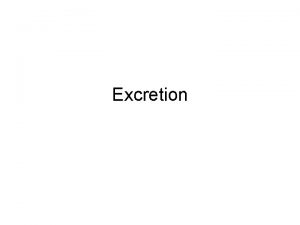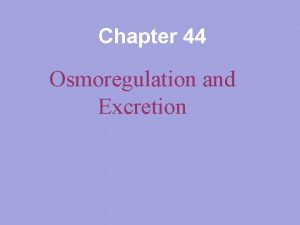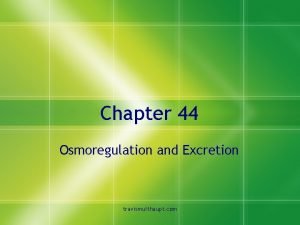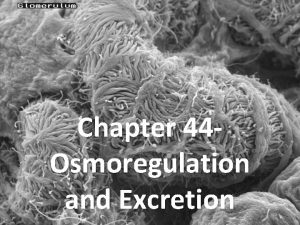Osmoregulation and Excretion Chapter 44 Osmoregulation Osmoregulation management







- Slides: 7

Osmoregulation and Excretion Chapter 44

Osmoregulation • Osmoregulation: management of the body’s water content and solute composition • Excretion: removal of nitrogenous wastes from the body • Nitrogenous wastes: produced by the breakdown of proteins and nucleic acids; very toxic – Ammonia: most aquatic animals, many fish – Urea: mammals, most amphibians, sharks, bony fish (in liver; combo of NH 3 and CO 2) – Uric acid: birds, insects, many reptiles, land snails

Evolution of Excretory Systems • • Protonephridia/ Flame-bulb system: Platyhelminthes (planaria) Metanephridia: Annelida (earthworm) Malpighian Tubules: Insects and terrestrial arthropods Kidneys: Vertebrates

Vertebrate Excretory Systems • Mammalian excretory system involves – Urinary bladder: urine storage – Urethra: urine elimination tube – 2 kidneys and each has: • Renal artery/vein: kidney blood flow • Ureter: urine excretory duct • Renal cortex (outer region) • Renal medulla (inner region) • Nephrons: functional unit of kidney – Cortical nephrons (cortex; 80%) – Juxtamedullary nephrons (medulla; 20%)

Nephron Structure • Glomerulus: ball of capillaries • Bowman’s capsule: surrounds glomerulus • Proximal tubule: secretion & reabsorption • Loop of Henle: water & salt balance • Distal tubule: secretion & reabsorption • Collecting duct: carries filtrate to renal pelvis

Nephron Function 1. Proximal tubule: secretion and reabsorption change the volume and concentration of the filtrate bicarbonate, Na. Cl, H 2 O, glucose, & amino acids reabsorbed out; H+ and toxins secreted in; ammonia passively diffuses into filtrate 2. 3. 4. 5. Descending loop of Henle: reabsorption of water only Ascending loop of Henle: filtrate loses salt without giving up water and becomes more dilute Distal tubule: potassium and salt levels are regulated as well as p. H Collecting ducts: carries the filtrate through the medulla to the renal pelvis, and the filtrate becomes more concentrated by the movement of water out

Hormone Involved in Water Regulation • Antidiuretic Hormone (ADH): produced in the brain (hypothalamus) and stored and released from the pituitary gland in the brain; makes the collecting ducts more permeable to water so more water is reabsorbed producing concentrated urine
